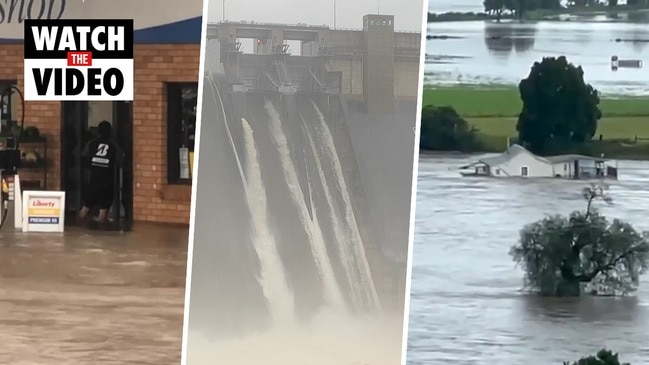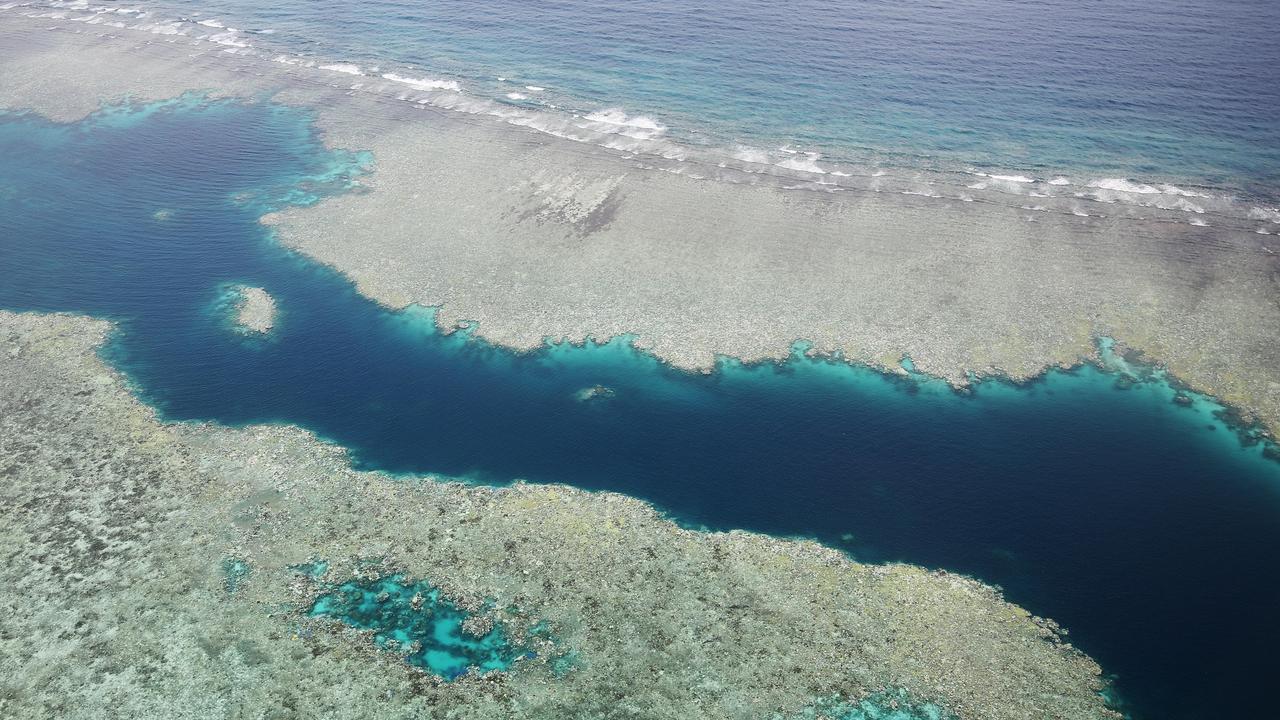Eight months of rain falls in parts of NSW as flood risk persists
A staggering eight months of rain has fallen on parts of NSW in the space of a week and experts warn the unfolding disaster is not over yet.

Environment
Don't miss out on the headlines from Environment. Followed categories will be added to My News.
Eight months of worth of rain has soaked parts of NSW in the space of a week, triggering hundreds to evacuate and thousands of calls for help.
The Bureau of Meteorology’s Agata Imielska revealed two-thirds of NSW’s national rainfall, or eight months worth of rain, had fallen over the state in just seven days, with a metre of rain drenching some areas during that time frame.
Ms Imielska described conditions as “disastrous”, with rain continuing to fall not only over the east coast but also in inland parts of NSW.
“With that those dangerous conditions … that flood risk is very much with us and it is very important for the communities to stay across the current flood and severe weather warnings,” she said.
“We’re not out of the woods yet.”
A few locations including Mount Seaview (1083mm) and Comboyne (1034mm) experienced more than 1m of rainfall - which is two thirds of the annual rainfall - in the space of a week.

Ms Imielska said the state been hammered by both heavy rainfall and flooding.
“This makes it particularly unusual and a very dangerous situation,” she told reporters on Tuesday.
Inland areas also soaked by a deluge of torrential rain include the northwest slopes, where some parts have been lashed by 200m of rain - four times the monthly average in just 24 hours.
More rain is also forecast for the south coast as a low pressure comes into play and the rain band travels south.
“When that low pressure system comes through later today, we will see heavy rainfall and flood risk on the south coast as well,” Ms Imielska said.
The system is moving quickly and experts have determined a “clearing trend” behind it that will deliver sunny skies of western Sydney and the mid north coast later on Tuesday, but the food risk remains, potentially for many months.

The main concerns are with the Hawkesbury and Nepean River catchments where flood levels will remain high.
BoM hydrologist and flood operations manager Victoria Dodds said rivers could stay flooded for weeks or even months.
“There’s flooding happening right across the state, eastern coastal catchments where we’ve seen these really heavy falls tend to respond very quickly (to clearing conditions),” she explained.
“So as that rain clears … the situation could improve very quickly. However in western NSW once the rivers get going, they can keep flowing for not just days but weeks or months on end.”
Ms Imielska reiterated conditions would improve later on Tuesday as the rain band clears.
“A large part of the state will actually see conditions really ease later today … in terms of that heavier rainfall, things will improve,” she said.
⚠‼FLOOD EVACUATION WARNING FOR RESIDENTS ‼⚠NSW SES is advising residents who are located in the lower reaches along the Hawkesbury River from Wisemans Ferry to Brooklyn to prepare to evacuate.MORE:https://t.co/BCnxAe6tsR
— NSW SES (@NSWSES) March 23, 2021
“That will mostly be along the large stretches of the NSW coast (but) we will also see conditions inland also improving.
“But again, in terms of that flood risk … those inland catchments tend to respond much slower and have those more protracted floods.
“So just because it’s not raining, just because there are clear skies and sunshine, doesn’t mean that the flood risk isn’t with us.”
Residents in far northwest Sydney were told to leave immediately on Tuesday morning as helicopters and boats were sent to rescue more than 500 people from 200 homes alone the Colo River.
The river links up with the already flooded Hawkesbury River and was flagged as a major area of concern for NSW SES.
Residents were issued the evacuation warning about 8am Tuesday.
“This rain is incredible and it’s just not stopping,” NSW SES commissioner Carlene York told 2GB.

RELATED: More than 15,000 may have to flee their homes
“The Hawkesbury River and in particular the Colo River is an area of great concern today.
“The Colo River is rising much more rapidly than we expected and 200 homes are already isolated and the access is quite difficult.
“So we are having meetings this morning, with the latest weather bureau forecast, just to see what we have to do with that area to keep those people safe.”
Another 15,000 people across the state have been told to prepare to leave if conditions worsen.
Clear conditions are expected going into the weekend, apart from the occasional shower or two in some parts, Ms Imielska.
Originally published as Eight months of rain falls in parts of NSW as flood risk persists



